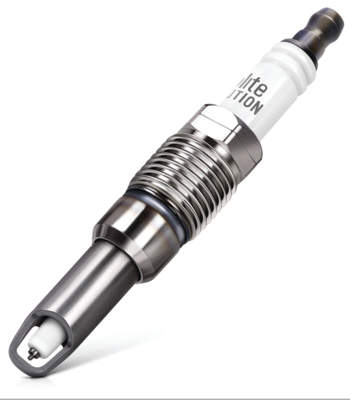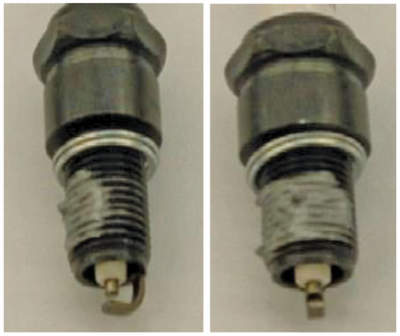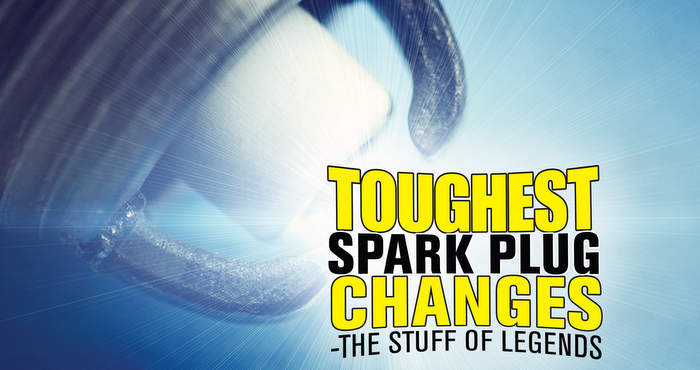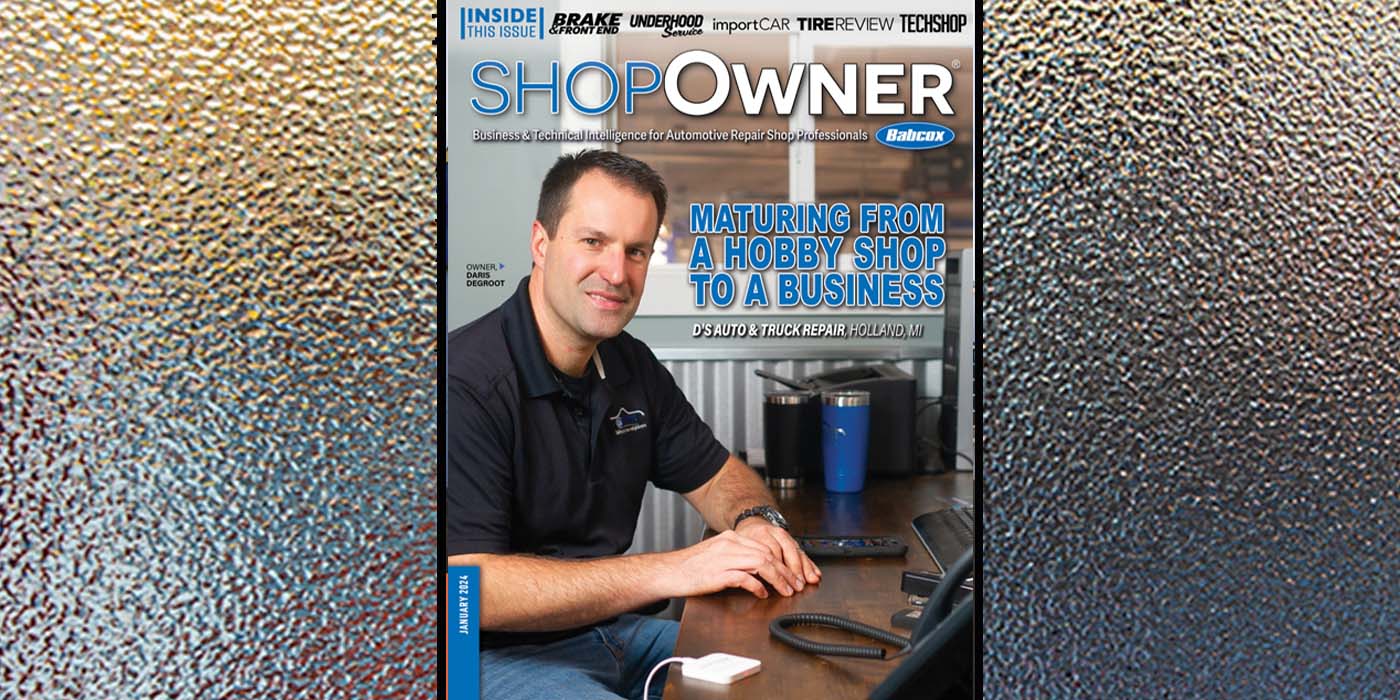We have all been there before: scratched arms, busted knuckles and an aching back caused by a difficult spark plug replacement job. If you think they are getting tougher every year, you are right.
Every new engine design is putting the plugs deeper in the heads, and items like intake manifolds are getting in the way. At the same time, the spark plugs are getting thinner and more difficult to remove.
On earlier models, certain vehicles had plugs that were extremely difficult to change as part of a tune-up. Plugs in those days never lasted more than 30,000 miles before they were fouled with carbon and deposits from leaded gas.
Today’s plugs may last longer, but complexity under the hood has increased significantly.
Tough Late-Model Spark Plugs
Ranking which late-model cars and trucks have the toughest spark plugs to remove is difficult because all of these jobs can be tough. The key is to look up the procedures and labor time before quoting the job. Overlooking that half the engine bay needs to be removed can cost you.
One common roadblock in removing some spark plugs is the intake manifold. Take the Ford Duratec V6, for example. On front-wheel-drive models, Ford folded the manifold onto the rear bank of cylinders. To replace the plugs, the manifold must be removed, along with all of the hoses and wiring that attaches to the manifold. Make sure to include the intake gaskets and the labor to replace them. Trying to reuse these gaskets can result in leak and lean codes. Chrysler, Nissan and many other manufacturers have this style of intake manifold.
 The latest roadblocks are next generation spark plugs. Real estate in the combustion chamber is becoming sparse as engineers look to boost performance and economy. The spark plug now competes for space with the direct fuel injectors and valves. To make room, engineers have shrunk the size of the spark plug’s shell from 14mm to 10mm in the past decade.
The latest roadblocks are next generation spark plugs. Real estate in the combustion chamber is becoming sparse as engineers look to boost performance and economy. The spark plug now competes for space with the direct fuel injectors and valves. To make room, engineers have shrunk the size of the spark plug’s shell from 14mm to 10mm in the past decade.
The trendsetter here is the infamous Ford Triton engine that uses long-reach 10mm plugs, but the threads on these plugs are also 1-3/8” above the end of the plug, so heat has to travel a long way before it can be dissipated through the threads and into the cylinder head. This two-piece design with a strap-style bottom electrode was designed to stay hot enough to prevent carbon buildup, but the design causes the plug to break and leaves the bottom part of the plug in the head.
This strap-style spark plug design was unique to the Triton engine, and other 10mm designs have a more conventional design. These plugs look like regular 14mm spark plugs, but the threaded part of the shell is smaller. These plugs were first used by Honda, but have found their way into many domestic and import nameplate vehicles.
The issues with these 10mm plugs are the torque specifications. A 14mm spark plug torque specification can range between 18 to 25 ft.-lbs depending on the cylinder head’s material. A 10mm spark plug typically has a range of 7 to 9 ft.-lbs. Overtorquing the 10mm plug can cause the shell of the spark plug to fracture. They may not break, but a fracture can cause pre-ignition and misfires because the shell doesn’t conduct heat in the normal manner. Always use a torque wrench and check the specifications for that specific vehicle.
Do not use anti-seize on these new plugs, either. Applying anti-seize to the threads of spark plugs with metal plating will cause you to overtighten the spark plug even if you use a torque wrench. However, all spark plugs that have a blackened or dull appearance on the metal body offer no protection against seizing or bonding to the cylinder head. These spark plugs do require anti-seize. A spark plug that has a shiny silver appearance on the metal body usually indicates that the plug is manufactured with metal shell plating and therefore will not require anti-seize.
The Ford Problem

The original equipment spark plugs in the Ford 5.4-L engines (as well as those in many other Ford 4.6-L and 6.8-L applications) are a two-piece design that tends to break if carbon has built up around the extended portion of the plug. When you try to remove one, carbon binds up the bottom portion of the plug, causing it to stick in the head. If you keep twisting, the upper half of the plug usually snaps off and leaves the lower electrode shield stuck in the head. The two-piece OEM plugs also can be easily broken if you tilt your plug socket wrench and exert any sideways force against the plug while trying to remove it.

Courtesy of NGK
Ford recommends using a special procedure when changing the spark plugs on a 2004-’08 5.4-L 3V truck engine (TSB 08-1-9). First, do not attempt to change the plugs on a hot or warm engine. Waiting until the engine has cooled down to room temperature will reduce the risk of damaging the threads in the aluminum cylinder head when the plugs come out. When you loosen the plugs, turn them only 1/8 to 1/4 a turn and then stop. Using compressed air, blow out the plug well after removing the COP coil, then spray or pour a dose of carburetor or throttle cleaner into the plug well. Let the solvent soak into the threads for at least 15 minutes (longer is better) before you unscrew the plug the rest of the way out. The solvent will help loosen carbon deposits on the plug so it will come out easier.
Ford says it shouldn’t take more than 33 ft.-lbs (45 Nm) of torque to remove the plug, and that the torque should decrease as the plug comes out. If it is higher, try turning the spark plug back in a half turn, then back out again. If the turning torque still seems high, repeat the back and forth rotation along with some penetrating oil to reduce turning effort.
Another bit of advice (which does not come from Ford, but from technicians and vehicle owners who have learned some lessons the hard way): don’t wait 100,000 miles to change the plugs on these engines. Yes, they are long-life platinum plugs, but waiting that long to change the plugs greatly increases the risk of the plugs sticking, breaking or chewing up the threads on their way out. Many experts recommend replacing the plugs every 30,000 to 40,000 miles on these engines.














